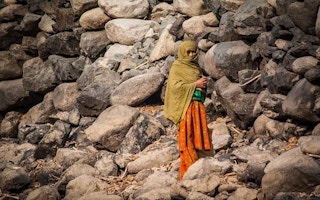Afghanistan is one of the countries most vulnerable to climate change, with worsening droughts and flash flooding destroying livelihoods and fuelling hunger.
However, the Taliban’s seizure of the country in 2021 means it has been excluded from global climate change talks and will not be represented at the COP28 summit starting in Dubai on Thursday.
Here’s a look at Afghanistan’s climate crisis and its wider repercussions:
How severe is Afghanistan’s climate change problem?
Afghanistan is one of the lowest producers of planet-heating fossil fuel emissions, accounting for less than 1 per cent of the global total.
But it is also one of the countries most vulnerable to the destructive impacts of climate change.
Its average annual temperature increased by 1.8 degrees Celsius between 1950 and 2010, about twice the global average, according to Afghanistan’s National Environmental Protection Agency. The largest rise was in the south (2.4 degrees Celsius).
Drought affects 25 out of 34 provinces in the country, where around 80 per cent of people depend on agriculture for a living and it accounts for more than 30 per cent of gross domestic product.
Changing weather patterns and rising temperatures not only affect rainfall, but also the melting of snowpack and glaciers in Afghanistan’s mountains that keep rivers flowing and fields watered during the spring and summer.
Higher temperatures can unleash cataclysmic glacial lake “outburst” floods in the mountains and impact meltwater flows for irrigation.
One study found Afghanistan had lost 14 per cent of its total glacier area between 1990 and 2015.
Widespread deforestation has also contributed to flooding, with fewer trees available to help prevent erosion and hold soil in place.








